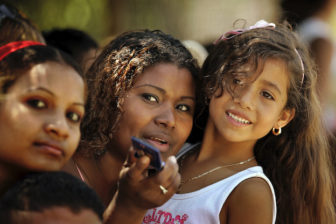New technology has the power to drastically improve the financial landscape for underserved populations throughout Latin America and the Caribbean. But for “fintech’s” potential in the region to be fully realized, national governments will need to adapt regulatory environments to keep up with the times. The good news is that some policymakers are starting to pick up the pace. The bad news is that there is much work left to be done.
A recent IMF working paper points to the region’s numerous deficiencies when it comes to financial access, the depth of financial tools available to customers and the efficiency of financial markets. Despite some variation across countries, low credit-to-GDP ratios, high service fees, heavy reliance on nontraditional finance sources, and large unbanked shares of the population are the norm. In each of these areas, there is a place for fintech to make markets work better for average people.
Take for instance the opportunities created by mobile phone-based banking and payment services. Mobile operators can now supply banking-related tools to clients directly on their phones, while e-commerce platforms offer numerous mobile payment services. In remote areas, mobile technology and bank-appointed agents on the ground make reaching unbanked customers easier than ever before.
But while these technologies have been deployed widely in Asia and Africa for more than a decade, Latin America lags behind. Banking services initiated by M-Pesa in Kenya in 2007, for example, have already reached over 30 million users in 10 countries. The broad use of mobile payment services in China has also grown rapidly.
Using mobile banking to send money across borders could help cut the cost of remittances, which correspond to 1.5% of GDP in Latin America and the Caribbean and up to 15% of GDP in places like El Salvador, Haiti, Honduras, and Jamaica. Despite the region’s high share of global remittances, its use of mobile money to send and receive them is relatively low, with costly traditional banks and money transfer operators still dominating the market. Traditional banks in the region charge roughly 6% to send remittance payments, compared to the 3% paid by mobile remittance users in sub-Saharan Africa.
The internet has also created new possibilities for financial intermediation. For instance, technology firms can now compete or collaborate with traditional financial institutions to offer banking and insurance services online. By the same token, internet platforms have facilitated financing activities such as crowdfunding, peer-to-peer (P2P) lending and consumer financing. China’s experience with internet finance has been illustrative of its potential – and the accompanying risks of overexpansion.
How can Latin America adapt? First, the entry of new non-banks and mobile network operators to the market will mean more competition and the expansion of services tailored to unbanked and underserved clients. Financial regulators in the region need to facilitate this transition, rather than stand in its way.
A positive example comes from Brazil, where the Central Bank is about to adopt measures to facilitate the use of existing ATMs for customers of financial technology startups and small, midsize and digital banks. Traditional brick-and-mortar branch networks have steadily lost space to ATMs as a means of cash withdrawals and, given that high informality and low financial inclusion lead to a strong adherence to cash payments in the country, access to ATMs should help new online banks and fintech services face distribution challenges. The measure is part of a regulatory agenda pursued by Brazil’s Central Bank since 2016 to boost competition and financial innovation and inclusion, and should be replicated elsewhere in the region.
Another positive example comes from Mexico. In March 2018, the country passed a bill to regulate fintech companies, providing legal frameworks for firms that supply alternative financing and electronic payment solutions. The bill is considered a major step toward rectifying the lack of access to traditional financial services faced by many Mexicans.
Distributed Ledger Technology (DLT), or blockchain, is another new frontier with wide potential impact. Blockchains are digital networks where transactions can be recorded and stored in a decentralized and reliable way, thereby economizing on the need for intermediaries or validators. DLT can help the region face the loss of correspondent banking relationships that began with the 2008 global financial crisis and led to the problem of de-risking. According to the Bank for International Settlements, correspondent relationships have continued to decline and consolidate. By moving to a DLT-based system, international bank transfers could bypass additional intermediaries. Furthermore, blockchain can reduce compliance costs related to so-called Know Your Customer regulatory requirements.
Another example of how DLT can boost competition and efficiency, facilitate cross-border trade payments, increase financial inclusion, and lift real incomes comes from a pilot project in Haiti financed by the World Bank. In the project, Haitian mango and avocado farmers were connected to consumers in the United States and Canada through a DLT-equipped broker. Spoilage rates fell and middlemen resellers were eliminated, while merchandise was tracked across the value chain and the farmers’ income increased eight-fold.
Finally, fintech can make evaluating borrower risk cheaper and faster through the use of artificial intelligence, machine learning and big data. Small and medium enterprises, like other underserved customers, may benefit from lower service fees and interest rate spreads.
In order to flourish in the region, fintech will require country-specific regulatory measures and institutional capacity building. Attention must also be paid to managing new risks to financial stability, cyber-risks and data privacy. Given the potential triple dividend in terms of financial inclusion, competition and inclusion, however, it is clearly worth it.








